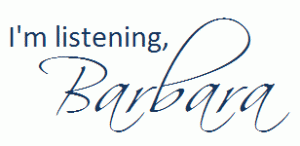
As I started reviewing blogs for my Fall 2010 classes, a few things came to mind. Rather than just sharing them with individual students, I’ve chosen to write this post, so even more new bloggers can learn from these tips.
NOTE: Many of these tips apply to blogs in general, not just to blogs for my PR classes.
- Every post needs to be categorized. If you have had me for a course before, or if you have me for more than one course this semester, please rename your Fall 2010 blog categories to append your course name. For example, instead of “Reading Notes,” edit the category name to “Reading Notes COMM 4333.” For directions on how to rename your categories, see WordPress Support on Category Management.
- If your blog post titles are generic, edit your posts and change the titles to make them more descriptive. For example, instead of “TOW #2,” title the post with the actual topic you are discussing. Better titles will make your blog more reader-friendly. For directions on how to retitle your blog posts, see WordPress Support on Post Title and URL.
- Review the directions for Tracking Your Blog Comments. There should be just ONE post, and you will keep editing & adding to this post as the semester progresses. (Once you are done with this class, you’ll have no need to continue tracking your comments — this is simply to make it easier for your professor to read the comments you have written without lots of clicks.)
- Create a descriptive or interesting site title for your blog, different from the default of “Username’s Blog.” For directions, see WordPress Support on Settings >> General Settings.
- Remember the old commercial where we were admonished “never let them see you sweat”? The same goes for website addresses, or URLs. Never let your readers see a URL. Simply hyperlink from the relevant words in your post. And it’s best if your hyperlink opens a new window, so that your blog will remain open in the browser. For directions, see WordPress Support on Links.
- Make sure that your posts are thorough and “long enough.” Topics of the Week need to be a minimum of 300 words, and Blog Comments need to be 100 words each. Use your discretion on the PR Connections and Reading Notes. See Blogging Guidelines for more details.
- Always (ALWAYS) provide a citation of some kind when you are using content from another source. Not doing so is plagiarism, plain and simple. If the source is available online, hyperlink to it.
- Buddy up with another student blogger — either at your own university or at another — and proofread each other’s posts. Typos are never acceptable.
- Beef up your About page to provide your readers with a robust and professional profile of you, so they can know more about who you are. (Use common sense, though. No need to include e-mail, cell phone, residence address, etc.)
- To be sure your blog is easily readable by readers “of a certain age,” ask a professor from another class or another person over 35 to quickly review your blog. Some of the free WordPress themes are really difficult to read, especially the following:
So, those are 10 of my tips as we start our Fall Semester. What other tips would you offer?







